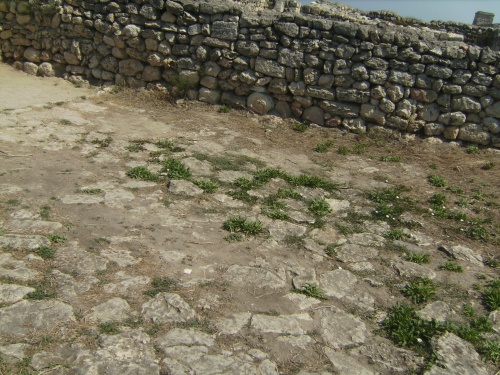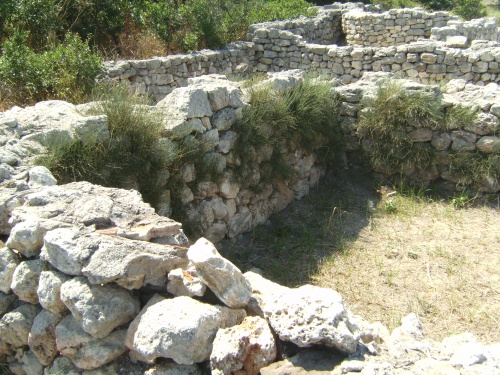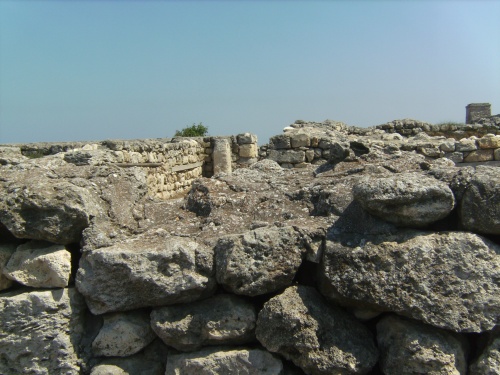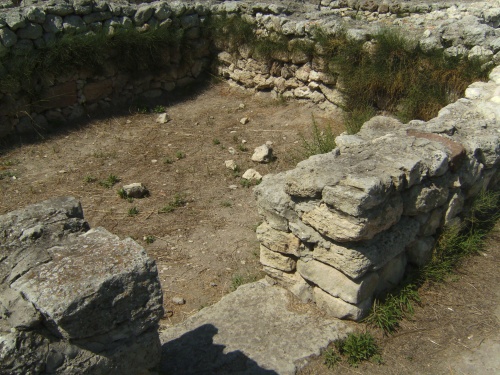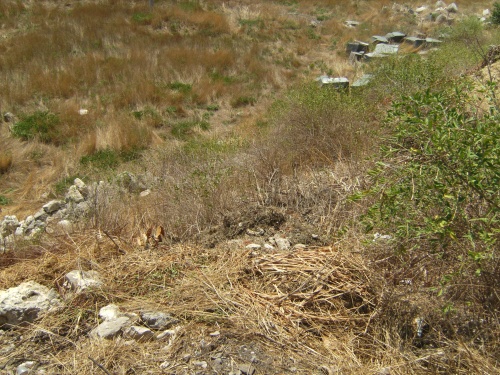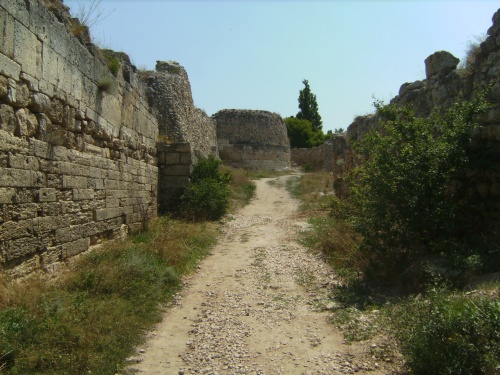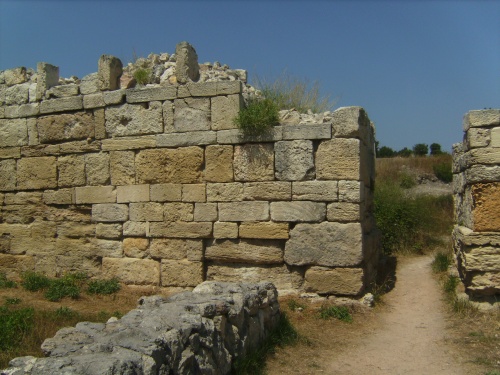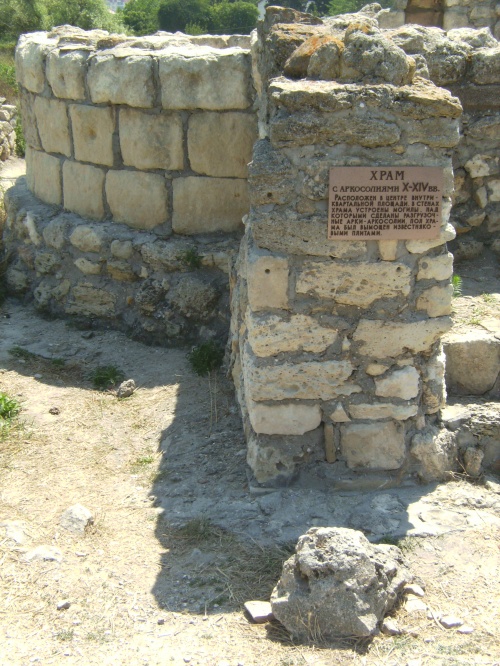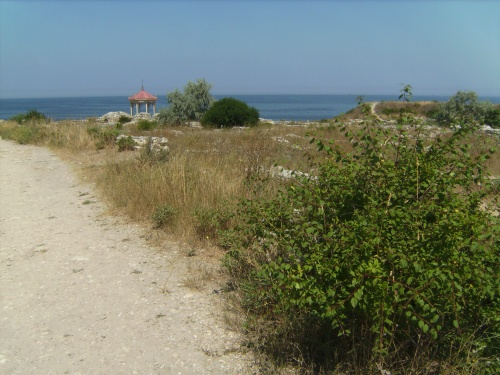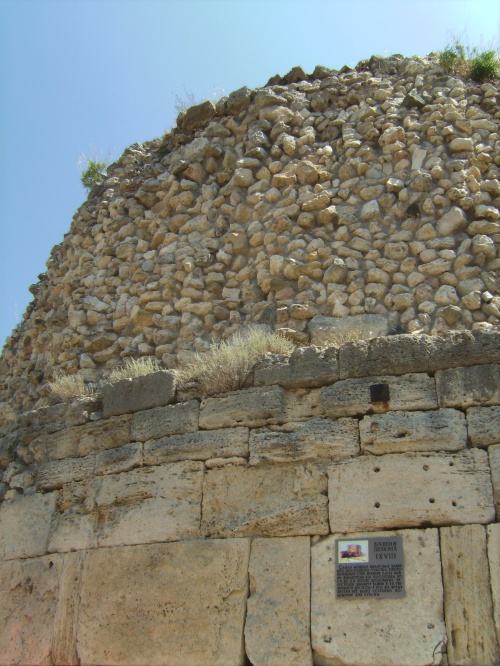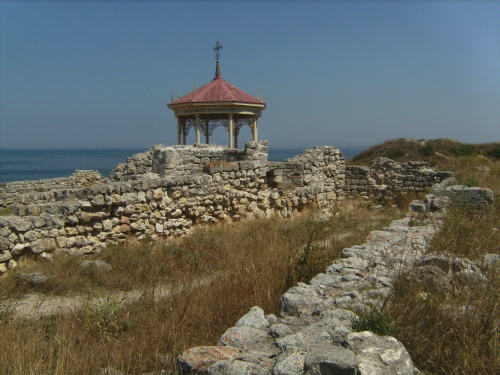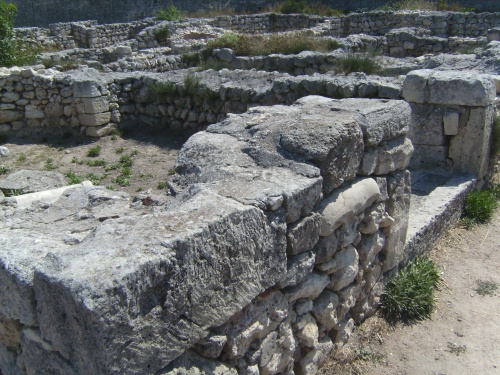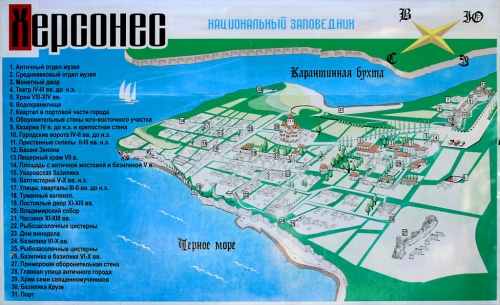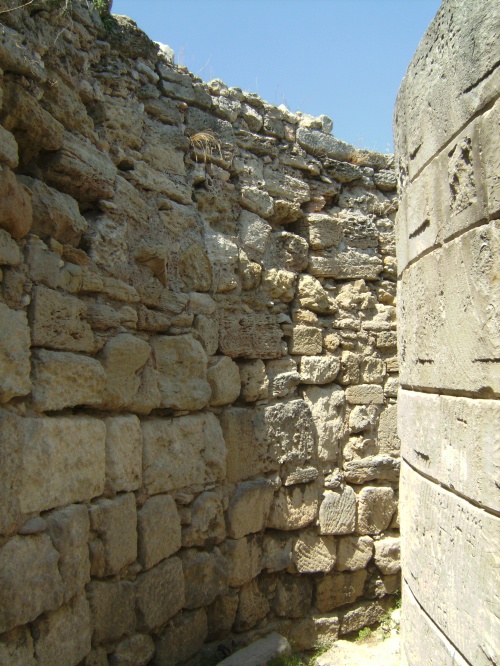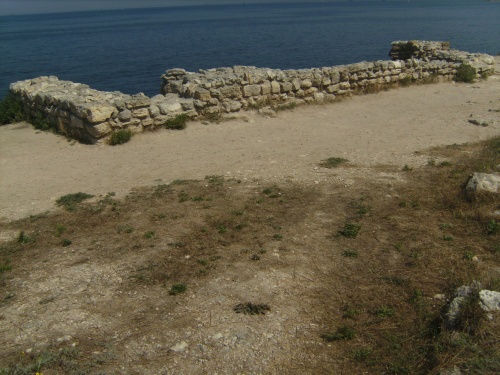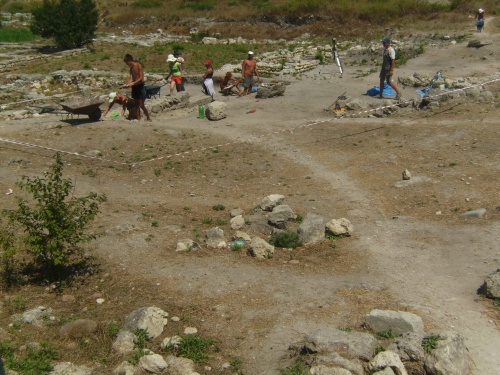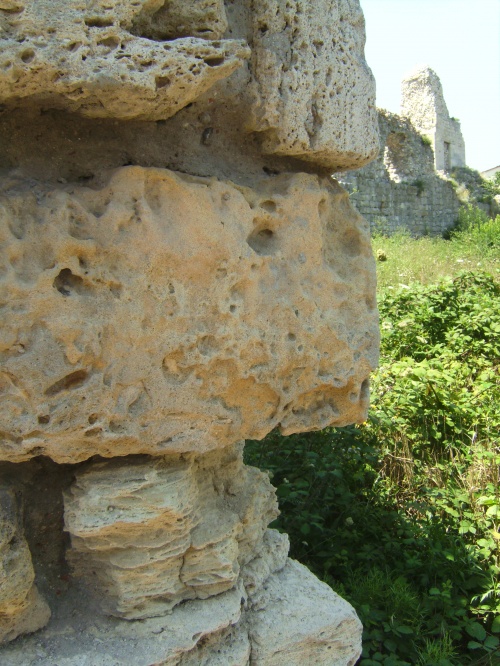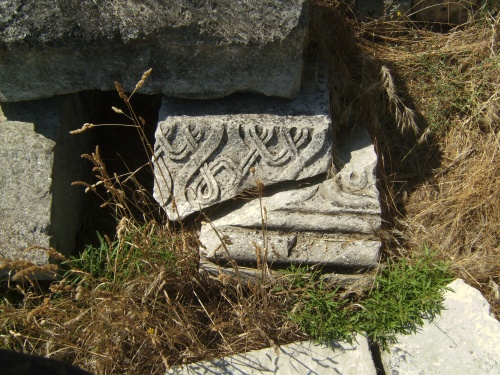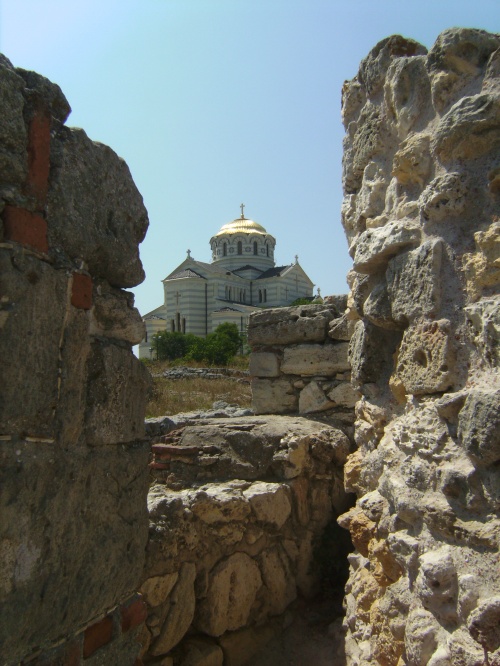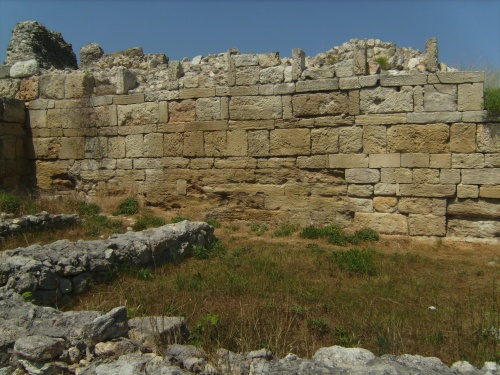Photo excursion - CHERSONESES TAURIC (91 photos) (part 2)
Story
Chersonesos was a Greek colony founded in 529/528. BC e. came from Heraclea Pontus, located on the Asia Minor coast of the Black Sea. It is located in the southwestern part of Crimea, near the bay, which is currently called Karantinnaya. In the earliest layers of Chersonesos, archaeologists found a significant number of shards (fragments) of archaic black-figure ceramics, which date back no later than the 6th century. BC e.)
A little over a hundred years after its founding, the territory of Chersonese already occupied the entire space of the peninsula lying between the Karantina and Pesochnaya bays (translated from Greek “Chersonese” means peninsula, and the Hellenes called the southern coast of Crimea Tavrika (country of the Taurians). Chersonesos took an active part in pan-Greek holidays, sports competitions, and pursued an active foreign policy. In the IV-III centuries. BC e. Chersonesos issues mass series of silver coins that successfully compete with other currencies of the Black Sea region.
In the 3rd century. BC e. The historian Siriscus lived in Chersonesos, who described the history of the city and its relationship with the Bosporus and other cities of the Black Sea region. A memorial decree dating back to the second half of the 3rd century preserved a mention of this historian. BC e.
All the years of the existence of the state, the Chersonesites had to fight wars. In the 2nd century BC. e. There was a bloody, long war with the Scythians. Kerkinitida was lost, Kalos Limen was destroyed, the enemy repeatedly stood at the gates of the city. Chersonese was forced to turn for help to the Pontic king Mithridates VI Eupator, who sent a large detachment led by the commander Diophantus to the Crimea. Acting at the head of a united army, which included Chersonese and Pontic troops, Diophantus, in the course of three campaigns (about 110-107 BC), defeated the Scythians, took Feodosia, marched to the Kerch Peninsula and captured Panticapaeum. However, Chersonese failed to maintain its independence: it became part of the power of Mithridates. Since then, the city has been in constant dependence on the Bosporan state.
After the death of Mithridates VI Eupator, the political map of the entire Eastern Mediterranean changed dramatically. Choosing the lesser of two evils, the Chersonesites sought to “stand under the firm hand” of Rome as a “free city” and get rid of the humiliating tutelage of the semi-barbarian kings of the Bosporus. The Roman dictator Gaius Julius Caesar granted the city what it wanted. However, later, following their favorite principle of “divide and conquer,” the Roman emperors either subjugated the city to their allies, the Bosporan kings, or provided it with “freedom” when it was necessary to restrain the ambitions of the Bosporan monarchs.
In the first centuries A.D. e. An oligarchic republic was established in Chersonesos, power in which belonged to a small circle of influential, noble and obedient persons to Rome. In the 60s of the 1st century, the Romans organized a large military expedition to Taurica to repel the Scythians, who again threatened the city. After the defeat of the Scythians by the troops of the tribune Plautius Silvanus, Chersonesos became an outpost of Roman troops in the Northern Black Sea region.
In the citadel of the city, replacing and complementing each other, there were detachments of the I Italian, XI Claudian and V Macedonian legions from the province of Lower Moesia (modern-day Bulgaria), and the ships of the Moesian Flavian fleet were based in the Chersonesos harbor. In the city there was the headquarters of the military tribune, who commanded the ground and naval forces in Crimea.
Monument to St. Andrew the First-Called in Chersonesos
At the turn of the 3rd - 4th centuries. The first followers of Christianity appear in Chersonesos. With the beginning of the new era, Christianity penetrated into Chersonesos, in the 5th century. it becomes the official religion. Monuments of ancient art, theaters, and temples are being mercilessly destroyed, and they are being replaced by Christian churches and chapels. As part of the Roman Empire in the 4th-5th centuries. the city is waging a grueling struggle for survival, holding back the strongest onslaught of barbarians, among whom the Huns were particularly ferocious. Chersonesos, protected by powerful defensive walls, continues to live for another millennium, but under the conditions of a new, feudal system.
In the 5th century, Chersonesos became part of the Byzantine Empire, and in the 9th century. became one of its military-administrative areas. By this time, not only the appearance of the medieval city had changed, but also its name: the Byzantines called it Kherson, the Slavs - Korsun. Until the 13th century. it was an outpost of Byzantium in Crimea. During this half-millennium of its history, Kherson found itself in the crosshairs of the military-political interests of the Khazar Khaganate, Kievan Rus, the Pechenegs and the Polovtsians, but the enemy only once managed to enter the city limits. In 988, the Kiev prince Vladimir, after several months of siege, captured the city. The capture of Korsun allowed Vladimir to dictate his terms to Emperor Vasily II and marry the Byzantine princess Anna. In the minds of ancient Russian chroniclers, the capture of Korsun is inextricably linked with the Baptism of Rus' and preceded the spread of Orthodoxy among the Russian people.
The failure of the IV Crusade in 1204 led to the collapse of the Byzantine Empire on
a number of small states and a sharp activation of Muslim and nomadic peoples. All this had the most tragic consequences for Chersonesus. In the first half of the 13th century. The Seljuk Turks became the masters of the Black Sea region, subjugating all transit trade. In 1223, the Mongol hordes of Batu Khan made their first raid on Crimea; the southern coast of the peninsula was attacked by the Seljuk Turks. In 1299, southern and southwestern Taurica was ravaged by the horde of the Tatar Khan Nogai. Chersonesus could not resist either. In the second half of the 13th century. the main trade routes moved to the eastern part of Taurica, where the Genoese founded their trading posts of Cafu (modern Feodosia), Soldaya (modern Sudak), and Chembalo (modern Balaklava) appeared near Kherson.
In the middle of the 14th century. The Genoese exercised control over the city, but failed to return it to its former power. The Grand Duke of Lithuania Olgerd defeated the Crimean Tatar army in 1363 near the mouth of the Dnieper, invaded Crimea, devastated Chersonesus and captured all valuable church objects here. His successor Vytautas went to the Crimea in 1397, reached Kaffa and again destroyed Chersonesus.
One should not think that in the XIII - XIV centuries. The Chersonites humbly observed the fading of life in their native city. On the contrary, city walls and towers were being repaired, services were held in churches, streets were paved, workshops were operating, inns were not empty... Residential buildings were decorated with ornamental carvings, paintings, and figured cornices. But in 1399 the temnik Edigei betrayed the city to fire and sword. After this crushing blow, Chersonesus was not destined to rise. Chersonesos was primarily a trading city, which disappeared because it could not withstand competition with the Genoese colonies: Kafa, Chembalo and others. They took control of trade in the Black Sea basin. Considering the morals of the Genoese merchants, one can imagine that not all methods of fighting Chersonesus were honest.
In the first half of the 15th century. The life of the small fishing village was still glimmering, but soon the population abandoned it too. The city died... In the 16th century. Polish ambassador Martin Braniewski writes about Chersonese: “The amazing ruins very clearly indicate that it was once a magnificent, rich and glorious city of the Greeks, populous and famous for its harbor. A high wall and numerous and large towers made of hewn huge stones still rise across the entire width of the peninsula, from shore to shore. This city stands empty and uninhabited and presents only ruins and devastation. The houses lie in the dust and are razed to the ground...”
